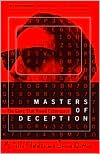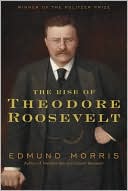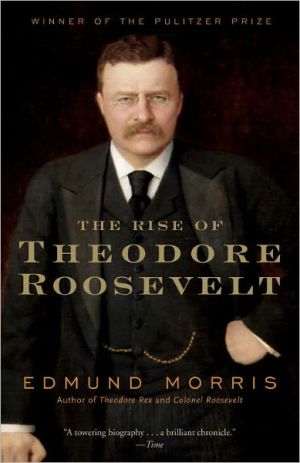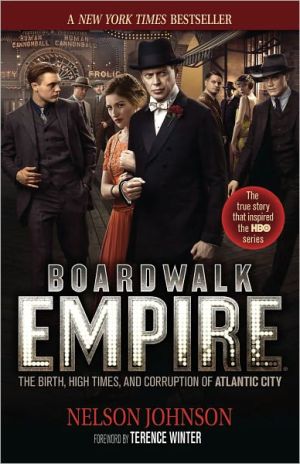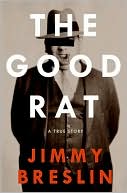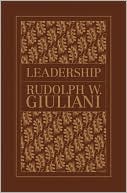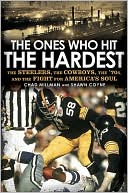Masters of Deception: The Gang That Ruled Cyberspace
The bestselling account of a band of kids from New York who fought an electronic turf war that ranged across some of the nation's most powerful computer systems. "An immensely fun and — one cannot emphasize this enough — accessible history of the first outlaws in cyberspace."—Glamour
Search in google:
The bestselling account of a band of kids from New York who fought an electronic turf war that ranged across some of the nation's most powerful computer systems. "An immensely fun and — one cannot emphasize this enough — accessible history of the first outlaws in cyberspace."—Glamour
Prologue\ You get a crazy-fast busy signal, like on Mother's Day when all the long-distance lines are jammed. Dial again. Busy. Dial again. Busy busy busy busy—\ Slam it down.\ The phone system is crashing. The giant computers that route AT&T customers' long-distance calls, computers called switches, are shutting themselves down, behaving idiotically in a way that only computers can. Switches are the building blocks of the phone network, and when they start throwing electronic tantrums, the world stands still to watch. There's no choice.\ It's happening today, all across America, as the phone company slogan "We're all connected" took on a new, darker meaning. Suddenly we're all disconnected. It's January 15, 1990, and millions of people are hopelessly jabbing the keypad, dialing the 1, dialing the three-digit area code, dialing the seven-digit number, waiting, getting a busy signal, trying again, getting a recording. One hundred fifty million long-distance calls a day travel these phone lines, threading through a massively intricate complex of earth-orbiting satellites, microwave transmitters, and millions of miles of fiber optic cable webbed across the globe. Thick-sheathed bundles of cable tunnel under the Atlantic Ocean. Long spindly strands are buried beneath railroad tracks or strung from utility poles that crisscross the Great Plains. The signals they carry all converge on some of the most powerful and delicate computers on the planet. So much could go wrong, but AT&T has never failed so spectacularly before, never let its customers down. No natural disaster has ever compromised the phone company's dependability. A few weeks ago, anearthquake measuring 7.2 on the Richter scale collapsed freeways in California, and the phones still worked fine.\ But not today. AT&T estimates that half of its customers' calls aren't getting through. Seventy-five million calls blocked. And the failure was sudden. At 2:25 p.m., one switch failed. Just one at first. Who knew why? It sent out a distress message to another switch, which should have been able to take over. But instead, the second switch went crazy, too, unable to cope with the bad news. It had a cascading effect, as one switch after another took itself out of service. And it was getting worse. Switch after switch after switch.\ What caused this damage? What force is so powerful, so dangerous, so heedless, that it crashes a nation's communications system? In AT&T's New Jersey headquarters, dozens of technicians and bosses and engineers and control-center specialists all want the answer. They stare at the world maps, two stories tall, that line one wall in the control room. The maps suddenly flash red in unison, screaming emergency alert. No warning. No gradual escalation. One minute, the phones work. The next, parts of the Northeast are out. Businesses that depend on the phones are crippled, they're missing tens of millions of dollars in sales. Customer-service departments are sending their 800-line representatives home early; people are panicking because they can't get through to their elderly parents in other states; AT&T operators are giving out Sprint and MCI access numbers to frustrated customers; AT&T spokesmen are calling for calm.\ And two teenagers in Queens are wondering if it's all their fault.\ Mark keeps vampire hours, cramming-for-exam hours, Late-Late-Late Show hours. Hacker hours. In the middle of a Monday afternoon, Mark should be at his internship, which he has to complete unless he wants to drop out of yet another high school. If not at work, Mark should be asleep. Mark definitely should not be on the phone, calling Paul.\ "Did you hear?" Mark says. "AT&T crashed."\ "What?" says Paul. "What did you say?"\ "AT&T crashed. It's on the news."\ Paul sits upright on the red-and-black velvet couch in his mom's living room, startled awake from a nap, already knowing there's no way he'll ever go back to sleep. Not today, not tonight, probably not for the rest of his life. AT&T crashed. Oh God.\ Paul's scared. Are they saying hackers did it? Did he do it? Could he have done it? He doesn't think so, doesn't want to believe it, has never in his life wanted to believe anything less. But the fact remains that the other night Paul was sitting at the computer in the basement of his family's house in Cambria Heights, the computer clandestinely hooked up through the phone line to a sensitive portion of AT&T's system.\ Paul had diddled with the AT&T routing tables on a local switch owned by New York Telephone, typing first this command and then that one in an attempt to understand how the phone system works. This is what Paul likes to do. The routing tables are like train schedules that a New York Telephone switch uses every time a long-distance call comes in. The switch routes each call out over the proper carrier—AT&T, MCI, Sprint—so that the call can shoot instantaneously across the country and ring the phone in your grandma's house in California. It's a fabulously complex process, and no hacker in America could resist fooling with it if he knew how to get inside the system.\ Of course, very few hackers could get past the security in the first place.\ Paul had been sneaking in for months. He was the quiet pro- gramming genius behind the hacker gang known as the Masters of Deception. And so had Mark, the teacher in MOD, who knew more about phone company computers than just about anyone. A few of the other guys in the group might have been able to do it, too. Like Eli, the handsome smooth-talker. Or John, a newcomer and the only black kid in the gang. Or Julio, John's younger sidekick from the Bronx.\ But who could be responsible for damage like this? No self-respecting computer hacker would ever destroy anything. No hacker would ever purposely hurt the phone system. Paul just wanted to look around. He just wanted to learn more. He'd know it if he'd done something bad. Wouldn't he?\ And what about Mark? In the six months leading up to this crash, on Martin Luther King Day, Mark alone has made sixty-nine unauthorized calls to AT&T computers in Chicago and Portland, Maine. Each time, Mark secretly coupled his $300 computer to AT&T's multimillion-dollar monsters and, well, looked around. That's what Mark does. He's a hacker, and he breaks into unknown computers and tries to figure out how they work. His calls to AT&T computers totaled more than twelve intoxicating hours of exploration.\ Paul and Mark know they're not allowed inside the AT&T system. It's illegal. The truth of the matter is that AT&T doesn't want some inexperienced teenagers from New York City testing the limits of its machinery. The kids are smart, there's no denying it. If they weren't smart, they couldn't get into the computers in the first place. And Paul and Mark are well intentioned. They just want to learn how things work. How else are they going to get access to study such a magnificent panoply of computer hardware? But once inside the corporate computers, Mark and Paul don't know what they're trampling, or where they're headed. Not really. They learn by trial and error.\ "What happened?" Paul asks. He's afraid to hear the answer, afraid not to hear it.\ "No one's saying," Mark says.\ Paul pictures his friend at the cramped table that serves as his bedroom desk on the other side of Queens. Mark usually sits hunched over the beat-up telephone handset that he has modified and customized with much intuitive fiddling and electrical tape. Mark has taken the thing apart and put it back together, examining its innards so many times that the tape is like a truss holding in the entrails.\ "I don't think it could be hackers," Paul says, in the same deliberate tone that he uses to measure out all his pronouncements. But what he is thinking, what he is fearing, what every bit of his brain is hoping is this: Please, don't let it be my fault.\ The phone call from Mark to Paul lasts only a few minutes. In fact, if you really wanted to know how long it takes, you could ask the box. The DNR. The Hekemian Dial Number Recorder that sits on the twenty-third floor of the New York Telephone Company's headquarters in midtown Manhattan, down the hall from the cigarette smoke-filled office of the Security Department's toll fraud unit.\ The box knows everything that matters. It watches Mark's phone, knows whenever someone lifts the receiver in the two-story brick row house in Elmhurst, Queens. The box records every phone number dialed from Mark's home, and it notes the hour: the start time, the end time, and the duration of each call. It funnels the information into a mini-computer that stores it for as long as anyone wants. And guess what? The box also watches Paul's phone. It's been watching for a while, months in fact. But don't worry. It's no big deal. The box doesn't stop them from making any calls.\ The box just watches. And writes down what it sees. And waits.
